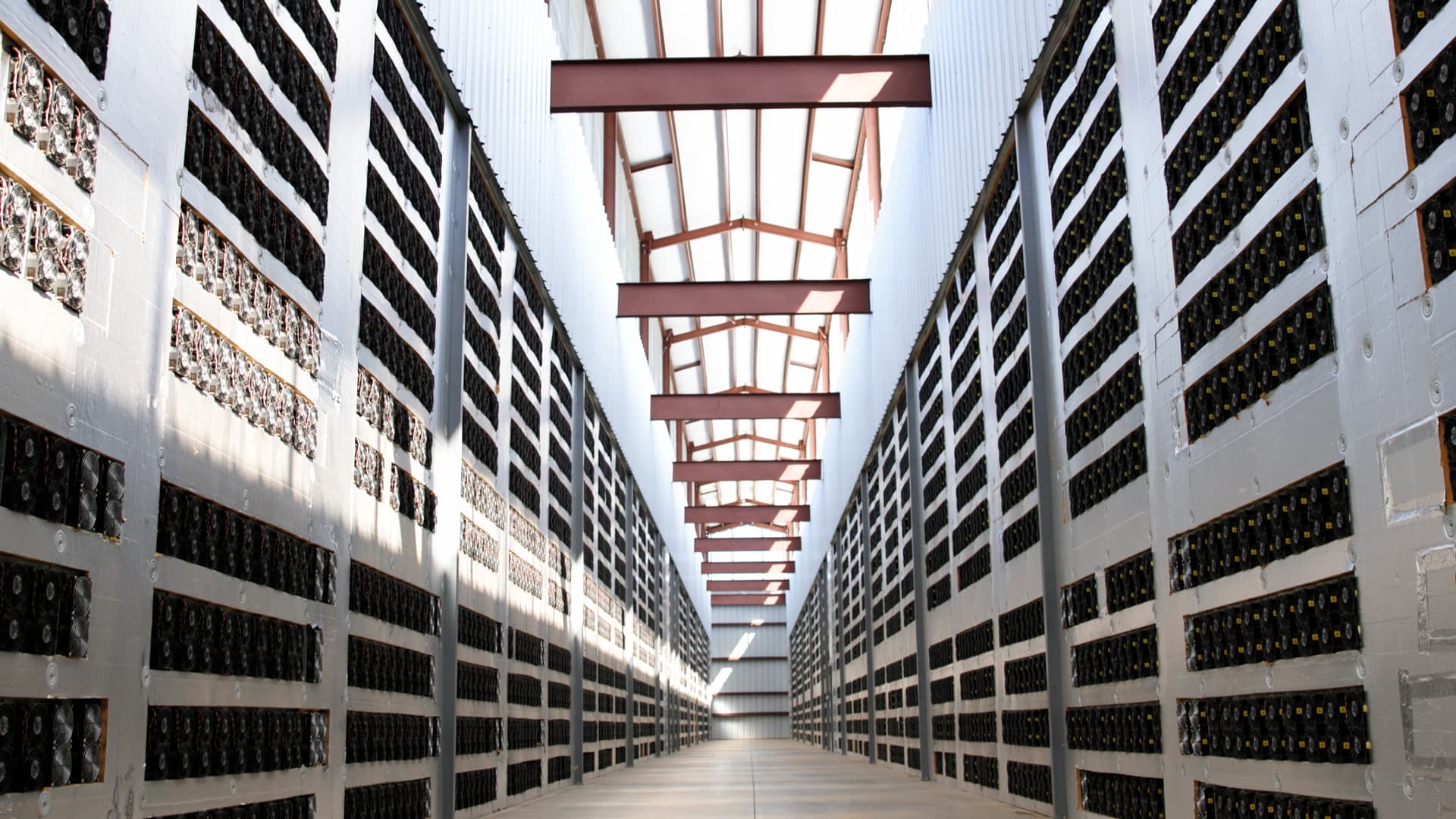Just over a year after the crypto winter sent bitcoin miner Core Scientific spiraling into bankruptcy, the Texas-based company is back on the Nasdaq. Trading is scheduled to resume Wednesday morning.
Core, which has operations in five U.S. states — Texas, North Dakota, North Carolina Georgia, and Kentucky — mines for bitcoin and other cryptocurrencies by packing data centers full of specialized computers that crunch math equations to validate transactions and create new tokens. The process requires expensive equipment, technical expertise and a lot of electricity.
As recently as 2021, Core was one of the largest publicly traded crypto mining firms in the U.S., hitting the market in July of that year via a special purpose acquisition company in a deal that valued it at roughly $4.3 billion. However, bitcoin lost over 60% of its value in 2022, meaning all that digital currency Core was producing was suddenly worth a lot less while operating costs remained high.
Without sufficient cash on hand to repay the financing debt owed on equipment it was leasing, Core was forced to enter bankruptcy in December 2022. The stock had fallen more than 98%.
“When bitcoin prices declined and power prices increased, obviously that hurt our levered free cash flow position, as well as hurt our balance sheet, since we were carrying bitcoin on balance sheet,” Core CEO Adam Sullivan told CNBC in an interview.
Rather than liquidating, Core continued to operate and reached a deal with senior security noteholders who hold the bulk of the company’s debt.
The restructuring plan announced Tuesday has slashed $400 million in debt from Core’s balance sheet by “converting equipment lender and convertible note holder debt to equity,” the company said in a statement.
Core said the new credit facility along with projected operating cash flow will allow the company to “emerge and continue executing its multi-year growth plan.”
“We went through a very successful Chapter 11 bankruptcy process,” Sullivan said. “It accomplished exactly what we wanted to accomplish, which was reducing debt and giving us time to pay down any remaining debt on our balance sheet over the course of five years.”
Also helping Core as it reenters the public market is an expansive footprint of mines across the country, and investors’ renewed enthusiasm toward bitcoin, which jumped 150% in 2023.
Even in bankruptcy, Core invested in developing its infrastructure. In 2023, the company minted 13,762 bitcoin from its fleet of mines, or around $540 million at the token’s current price. That doesn’t include the profit Core generates from mining coins on behalf of other companies.
Core is in the process of deploying tens of thousands of more mining rigs with the goal of increasing its capacity by more than 50% over the next four years.
“Our focus is not going to be on the market leadership position, it’s going to be on being the most efficient bitcoin mining company and looking at all of our assets inside of our portfolio, so that we can ensure that we’re refining power into the highest value compute that we can,” he said.
The public markets have been going big in mining since bitcoin started rebounding. Marathon Digital soared more than 590% in 2023 while Riot Blockchain jumped more than 350% and CleanSpark gained over 400%.
Chardan Research said in a note on Jan. 8 that Marathon’s “acquisition of hosting facilities signals a shift in management’s strategy from asset-light to owner-operator,” a move that it called a “meaningful improvement.”
Headwinds remain.
Bitcoin miners have pared back gains in the last few weeks as the price of bitcoin has fallen, and in April, a market-moving event dubbed the “halving” will cut the prize that miners receive in half.
The halving, which happens roughly every four years, is written into bitcoin’s code and is designed to stave off inflation. Though it will immediately impact miner profits, it’s also historically proven to be a catalyst for a run-up in the price of bitcoin. During the crypto market’s previous bull market run, the world’s largest cryptocurrency rose more than 560%.
There are also new potential opportunities for miners to collect fees, as a startup ecosystem is built on top of bitcoin’s base chain, Bernstein said in a note on Jan. 17.
“It is not surprising that listed U.S miners are investing aggressively to ‘land grab’ a higher share” of the $900 billion bitcoin network, the analysts wrote. The firm added that bitcoin miners are “best positioned to benefit from growing institutionalization and financialization of bitcoin,” including the buildout of the bitcoin-based payment infrastructure called the Lightning Network, as well as the rising popularity of nonfungible tokens and ordinals minted on bitcoin.
“We expect 2024 to be a break-out inflection year for crypto,” Bernstein analysts wrote. “We recommend achieving Bitcoin exposure via Bitcoin miners.” The firm said Riot and CleanSpark are its preferred picks.
